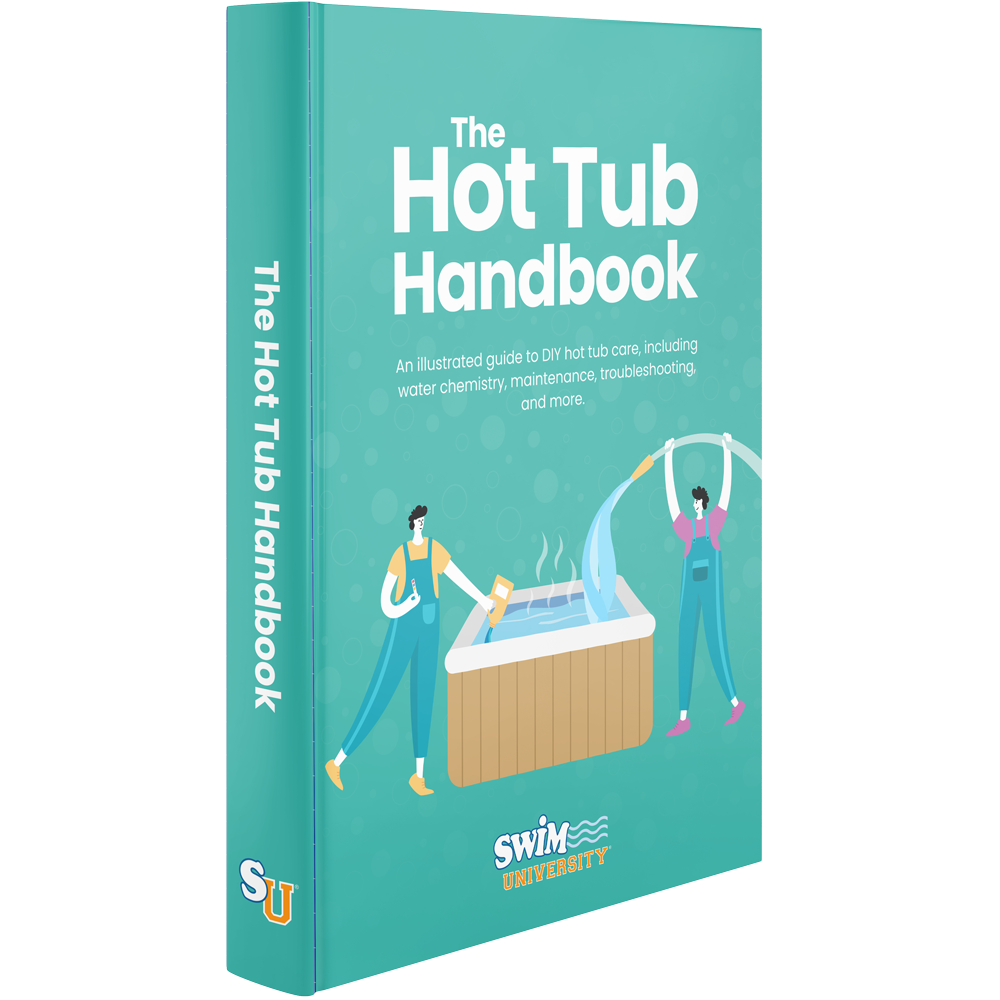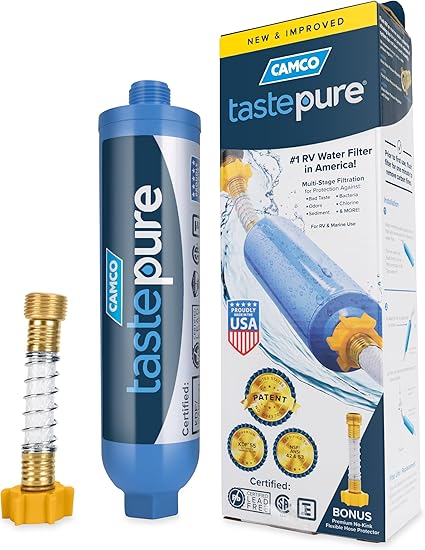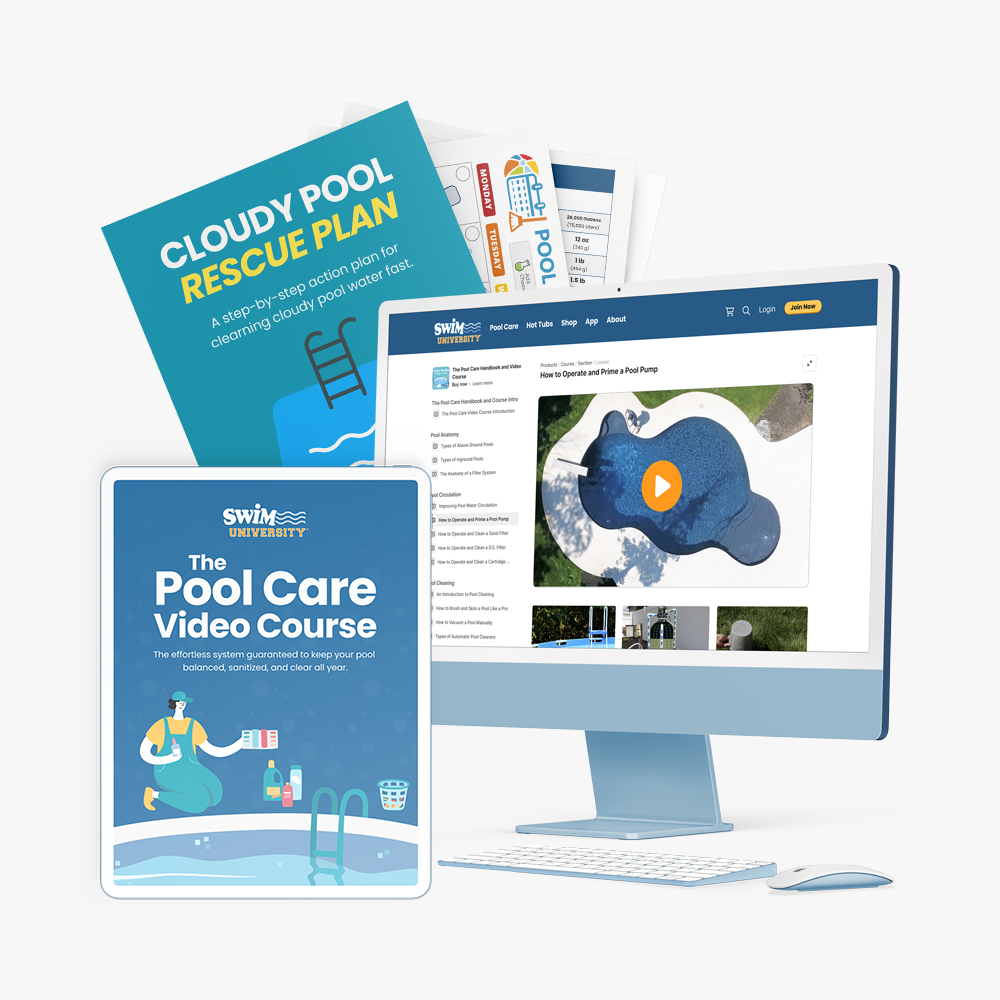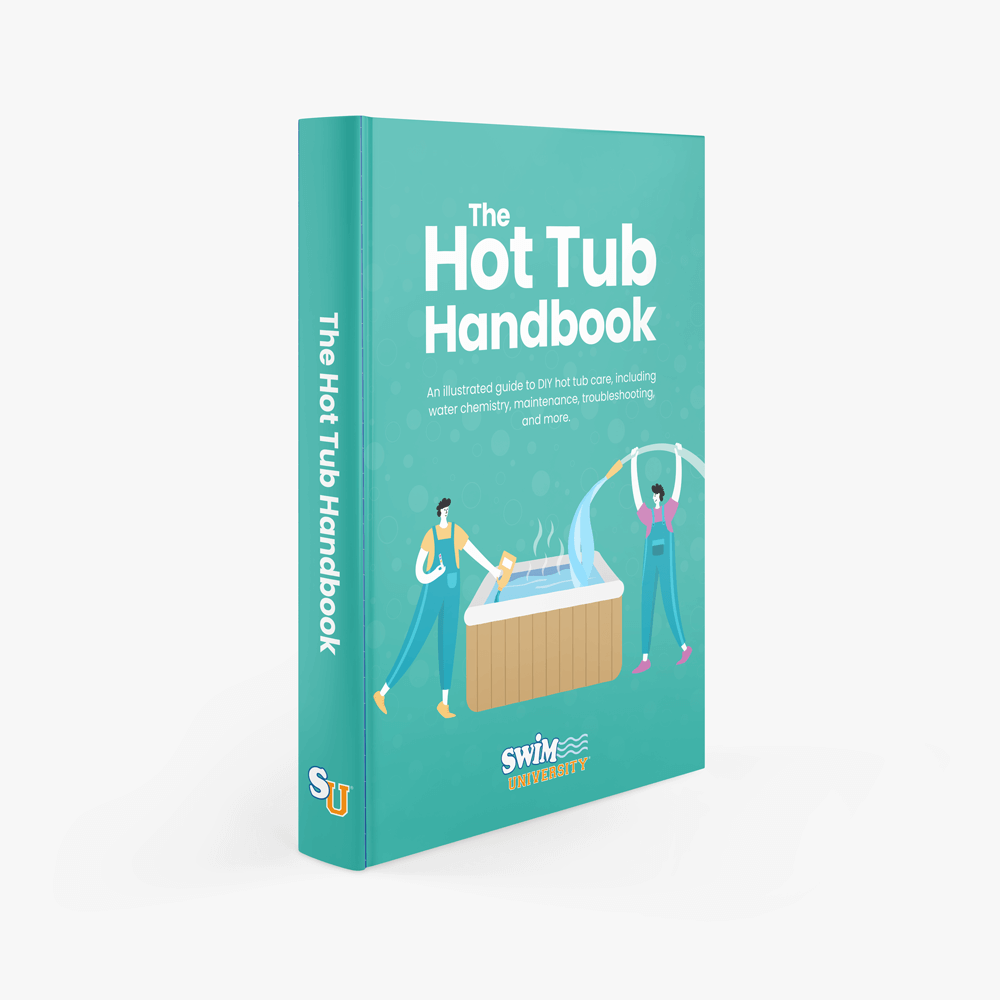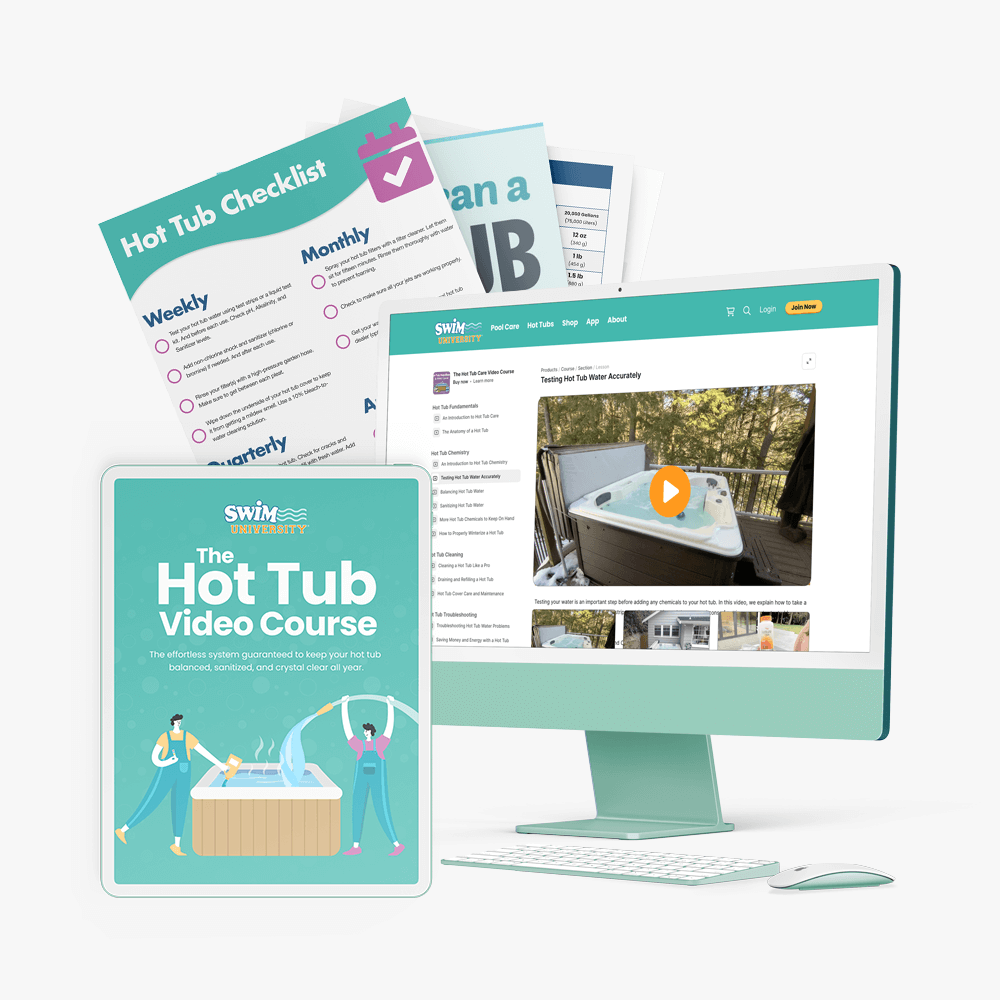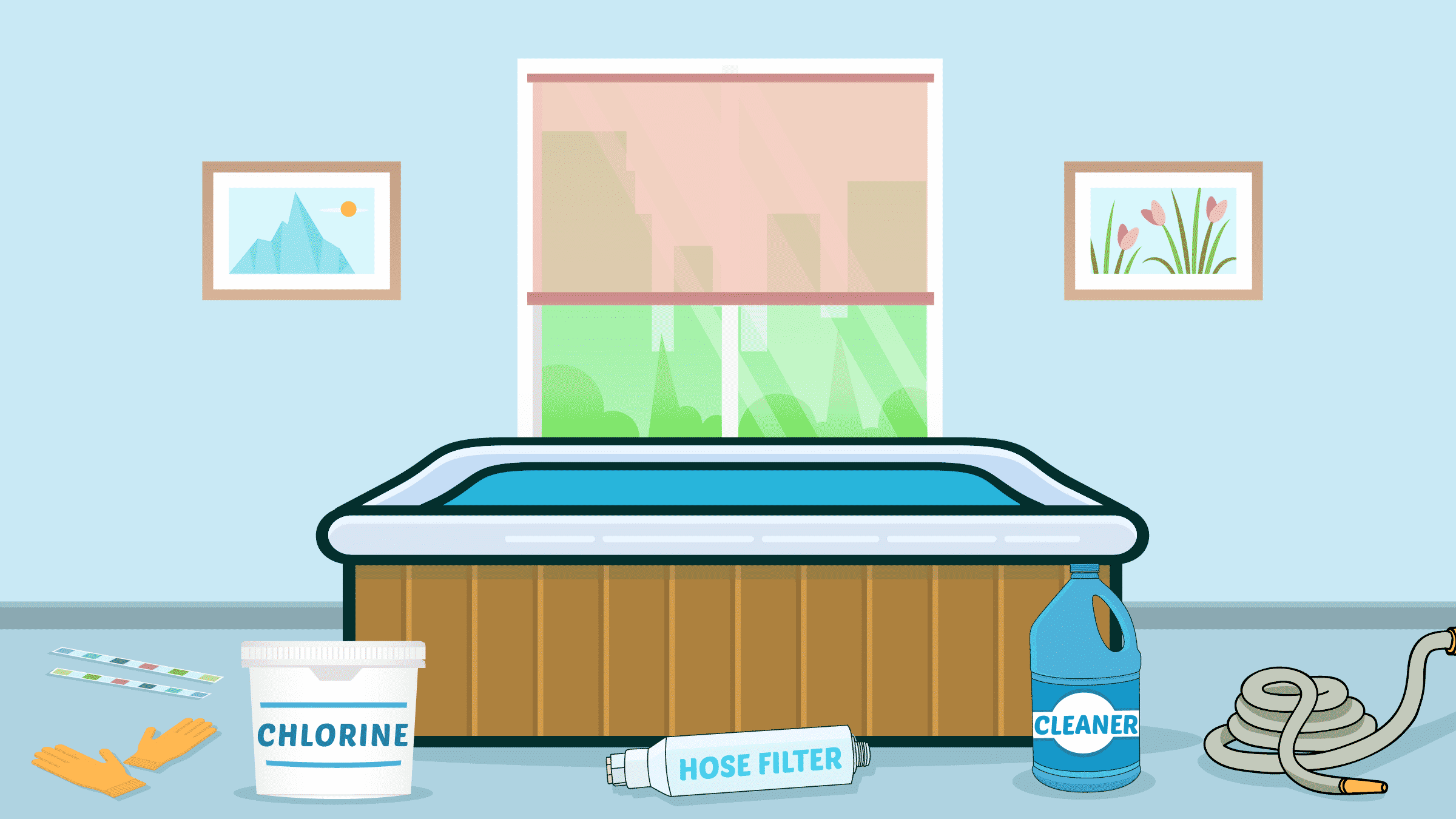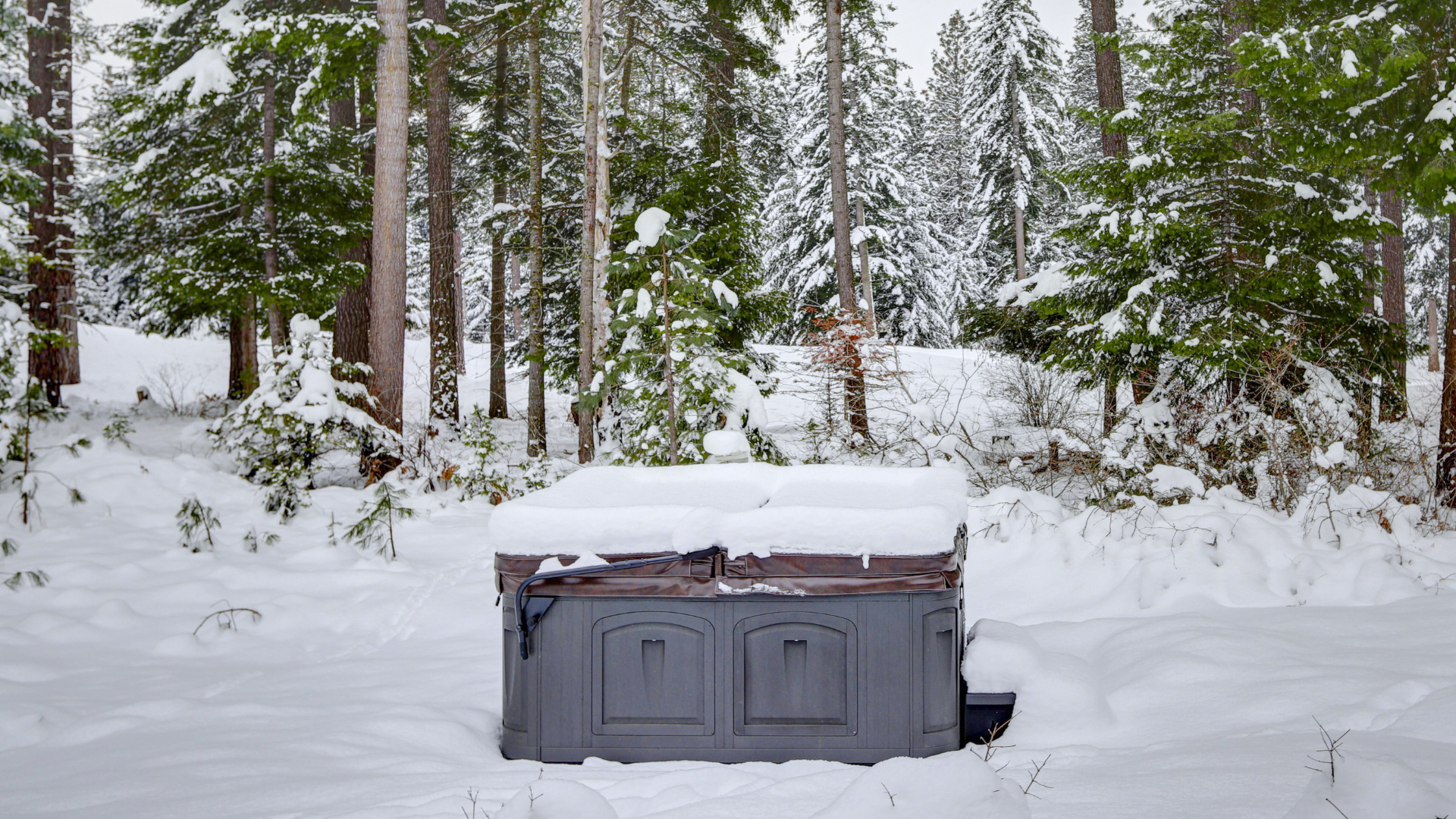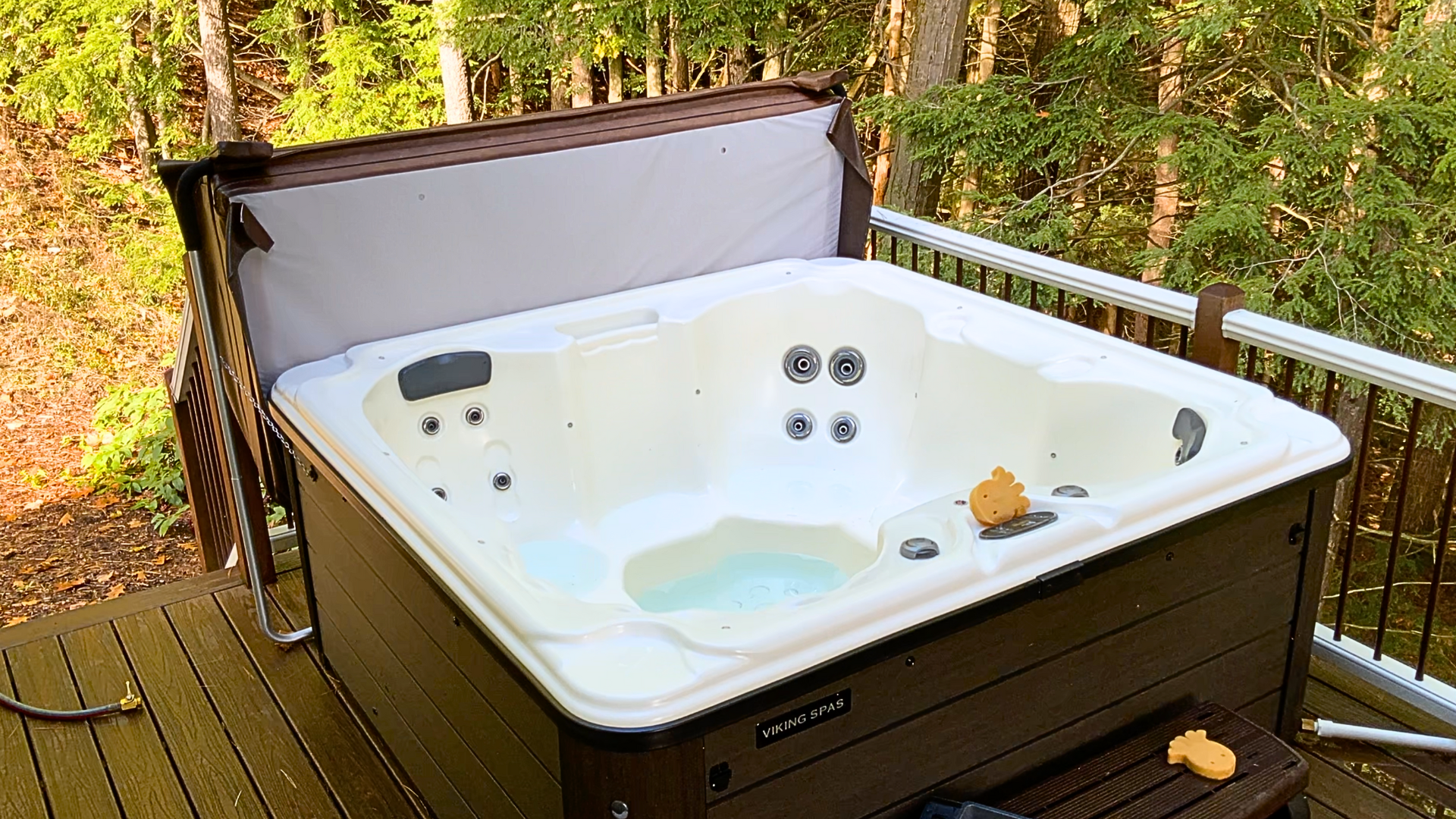Should I Empty My Hot Tub in The Winter?
Whether or not you should empty your hot tub in the winter depends on whether you can regularly add chemicals and keep the heater running. Otherwise, you’ll have to spend the time to properly drain and winterize all of your plumbing and equipment to protect it from damage caused by freezing temperatures.
Here’s how to decide whether or not you should empty your hot tub this winter:
- If you plan to be away for more than a month, experience lengthy power outages, or won’t use your spa often during cold weather, drain and winterize your hot tub. Winterizing includes emptying all water from the tub, cleaning the surfaces, draining the plumbing and jets, and optionally adding pool-grade antifreeze.
- If you plan to use your hot tub regularly and can maintain proper water chemistry, do not drain it. Keep your spa filled with water and keep it heated and circulating through the system, even when it’s not in use.
Whether you plan to drain your hot tub or keep it running, here’s how to protect your spa from freeze damage, and the complete steps for winterizing if you choose to drain it.
If you want a physical copy of all of this information in one easy-to-use place, check out our Hot Tub Handbook.
Learn how to keep your hot tub clear while saving money so you can enjoy more soaking time without big costs. The Hot Tub Handbook covers every type of hot tub on earth.
Never Leave a Hot Tub Off or Empty Without Winterizing
Can you leave a hot tub empty in the winter? Simply turning off the power and leaving your hot tub full of water can damage your plumbing and equipment. Without heat circulation in winter, standing water in pipes will freeze and expand, causing cracks and damage to pumps, heaters, and plumbing.
Proper winterization means removing all water from the tub, pipes, jets, pump, heater, and internal equipment. Even if you drain out the water from the spa itself, any leftover water inside your plumbing can freeze and cause damage to your plumbing.
If you want a step-by-step guide on how to winterize your spa, check out our guide on How to Winterize a Hot Tub or the winterization section in The Hot Tub Handbook.
Drain and Winterize if You Can’t Maintain Your Hot Tub for a Month or More
If you’ll be away for more than a month, won’t use your hot tub often, or can’t maintain your proper water chemistry, plan to drain and winterize your hot tub. While most spas can last several weeks without testing and chemicals, ongoing neglect can damage your cover and create unsanitary water.
If you experience extremely cold weather and won’t use your spa often, it’s likely worth draining and winterizing your hot tub. Running your system frequently in freezing temperatures consumes a significant amount of energy. If you’re unwilling to spend the money on keeping water warm, winterizing will save you money.
Drain and Winterize If Your Hot Tub is Off for More than 24 Hours
Lengthy power outages and keeping your hot tub off for more than 24 hours are other reasons to winterize. If temperatures drop below freezing and your hot tub doesn’t have power for one or two days, you risk freeze damage to the hot tub pipes.
Brief power outages typically won’t cause damage unless they last 24 hours or longer when temperatures are well below freezing. Most hot tubs can last with no power for 24 hours or less. If your spa is well-insulated with a properly fitted cover, the temperature may only drop 9°F (5°C) overnight when the outside temperature is 30°F (-1°C).
However, if you experience frequent, lengthy power outages or plan to keep your hot tub off while the weather is at or below freezing, consider winterizing your spa.
Can You Add Antifreeze Without Draining the Hot Tub Plumbing?
Adding pool-grade antifreeze to your plumbing after draining provides extra protection against freeze damage. However, you still need to ensure that most, if not all, of the water is removed from your plumbing, equipment, and jet fittings. Antifreeze is a supplemental safety measure, but not a substitute for properly winterizing your hot tub.
When Not to Drain and Winterize Your Hot Tub
Here’s when you don’t need to drain and winterize your spa:
- Mild climates: If you live somewhere where temperatures rarely drop below freezing, winterizing may be unnecessary. Keeping your hot tub running with minimal heating can take less effort and energy than shutting it down.
- Away for less than four weeks: Your spa doesn’t need to be drained and winterized if you’re gone for less than a month. Lower the temperature to about 80°F (27°C) and check that your freeze protection settings are active, if necessary.
- Plaster hot tubs: Inground concrete hot tubs with plaster surfaces should not be winterized. Plaster can become damaged or cracked when exposed to dry air. If you have this type of hot tub, consult with a pool professional about whether keeping some water in the tub is best.
Time Your Winterization Correctly
Plan to winterize your hot tub in late fall before freezing temperatures arrive. The ideal outside temperature for draining is when it consistently stays above 40°F (4°C). This prevents any standing water from freezing during the several hours it takes to drain and winterize.
If you try to winterize when it’s already freezing outside, water can freeze as you drain the spa. Even small amounts of water left in pipes expand when frozen, causing damage. Most hot tub repairs related to freeze damage aren’t covered under warranty.
Check your local forecast before starting any winterization maintenance. An unexpected overnight freeze during your cleaning process could cause serious damage to exposed plumbing. Allow enough time to complete the entire process in one day.
You can follow our complete guide on How to Winterize a Hot Tub.
Keep Your Hot Tub Running If You’ll Use It
Keep the water heated and circulating to prevent freeze damage to pipes and equipment. Most hot tubs have a freeze protection setting that automatically turns on the pump when temperatures approach freezing.
If you plan to use your hot tub at least once a week, set the temperature to at least 80°F (27°C) when it’s not in use. Maintaining a consistent temperature saves energy compared to heating your hot tub completely every time you use it. You also don’t want the pipes to freeze if the heater is completely off. Then, cover your tub securely with a well-fitting cover to help prevent heat loss.
Check your water level regularly to ensure it stays above the skimmer intake. If the water level drops too low, the pump and heater may shut off, resulting in frozen pipes. Add water as needed, especially if you use your spa sporadically during winter.
Fill your pool or hot tub with this hose filter that'll filter your water so you can have a fresh start with water chemistry.
Key Takeaways
- Empty and winterize your hot tub if you’ll be away for more than a month, experience lengthy power outages, or won’t use it often in cold weather.
- If draining, always properly winterize your plumbing and equipment. Never turn off the power and leave your hot tub full, as stagnant water becomes unsanitary and frozen water damages pipes and equipment.
- Time your winterization for late fall when temperatures consistently stay above freezing to prevent water from freezing during the draining process.
- If you plan to use it regularly and you can maintain your water chemistry in the winter, keep your hot tub running with heated, circulating water.
3 Ways We Can Help With Your Hot Tub
- Hot Tub Cheat Sheets (Free): Easy-to-use guides to help you keep your hot tub water balanced and sanitized.
- The Hot Tub Handbook: An illustrated guide to DIY hot tub care, including water chemistry, maintenance, troubleshooting, and more.
- The Hot Tub Care Course. You’ll get step-by-step videos and a step-by-step downloadable guide with everything you need to know about hot tub maintenance.

